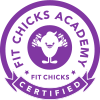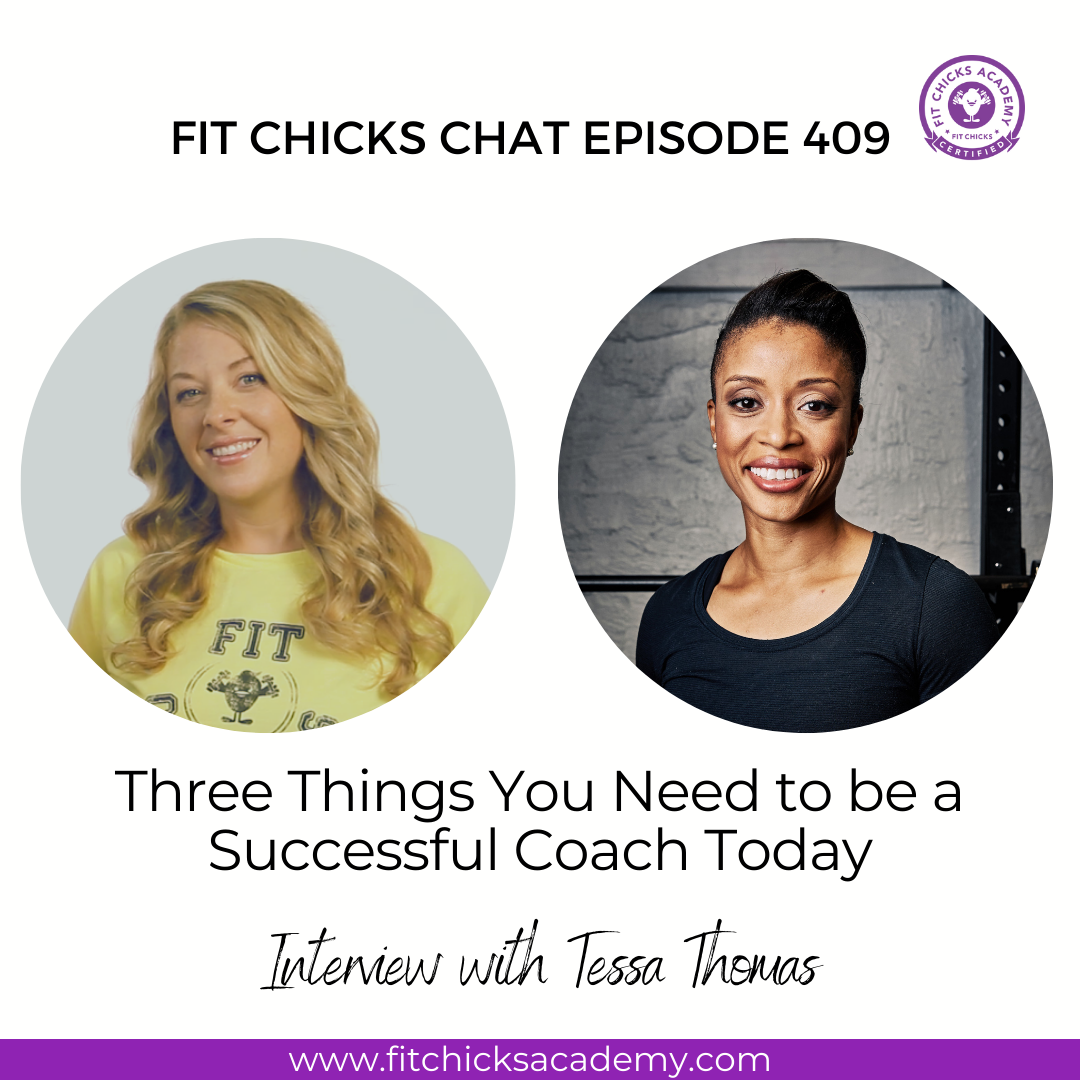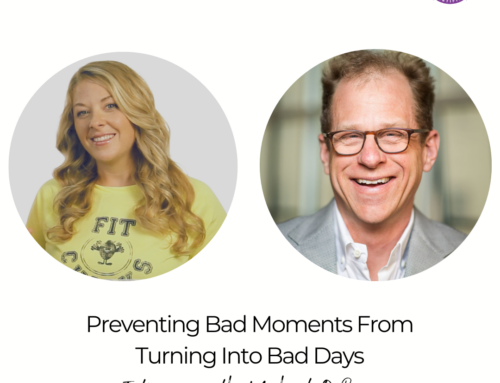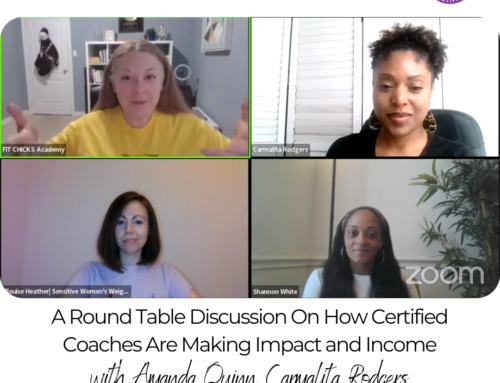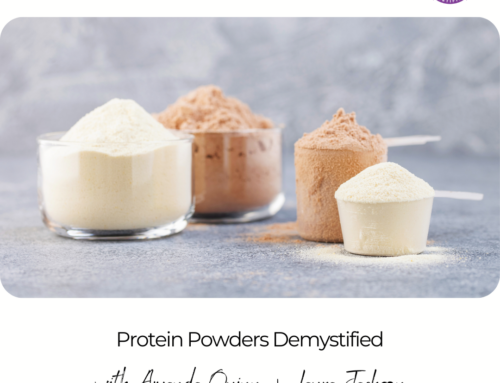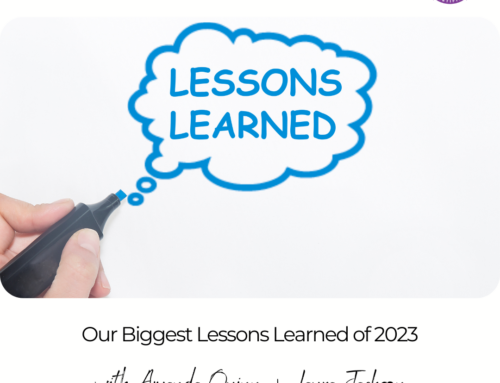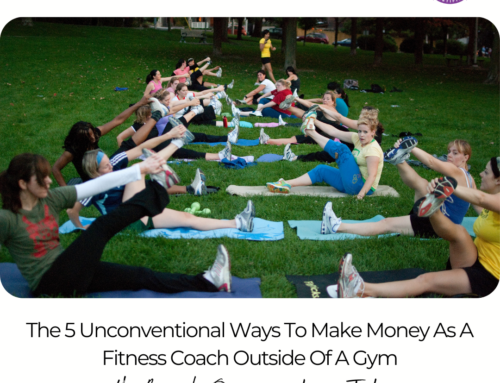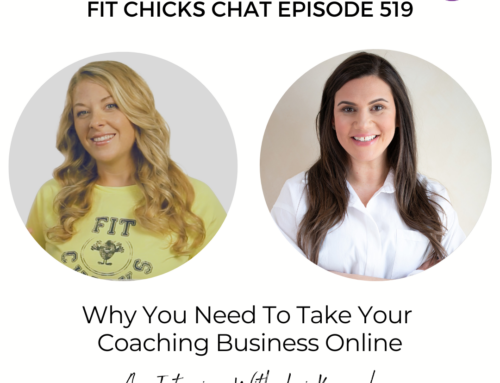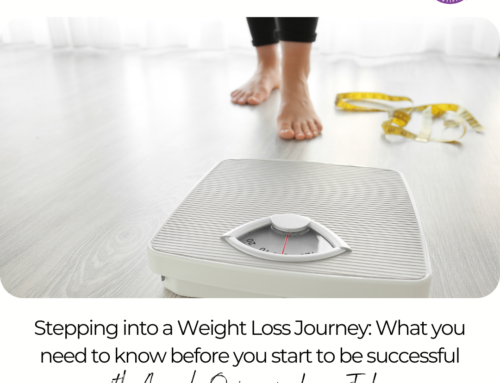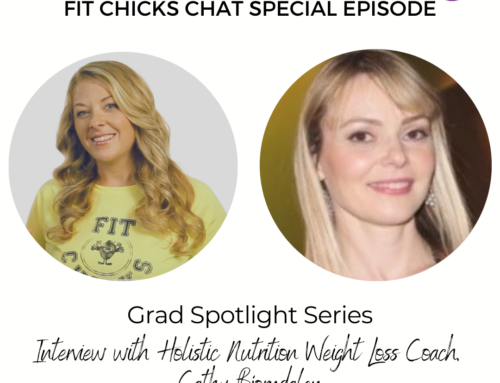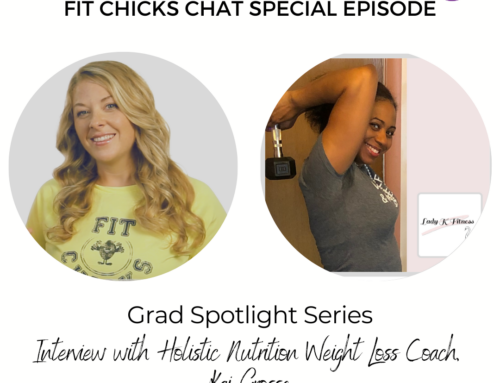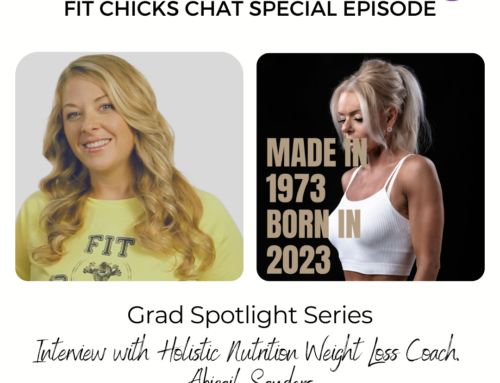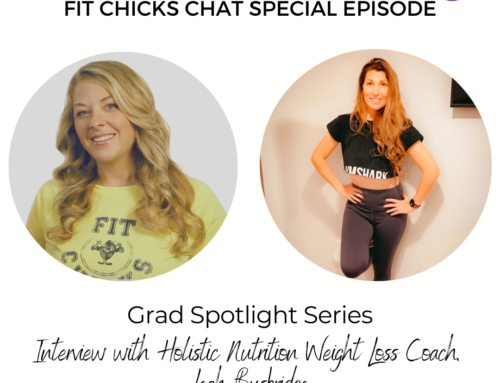As an NCAA athlete, Tessa was always focused on her health and wellness throughout her life but it was after her athletic career that she decided to try out sharing this passion with others.
Throughout this interview Tessa shares with listeners how she transitioned from being coached to becoming a coach and the three things that have allowed her to create a successful coaching career now working as a coach at Canada’s top performing F45 studio in Yorkville, ON.
Tessa also shares in this interview the secret to her coaching success at F45 and the one tool they have developed to help them stand out and perform with such high success rates for their clients.
Do you love health and fitness and are ready to make impact and income? Our FIT CHICKS Academy Fitness & Nutrition Expert Coaching Certification opens for enrollment this week so join us on Thursday at 12pm for our live info session to learn how to get certified and start build an incredible fitness business of your dreams at www.fitchicksacademy.com/infosession
CLICK ON THE PLAYER BELOW TO LISTEN TO THE FULL EPISODE
Bio
Tessa Thomas is a certified personal trainer of over 10 years and currently a coach of over 4 years at F45 Yorkville, one of Canada’s top performing F45 studios. Tessa is a former NCAA DI student-athlete and 2020 inductee into the Winthrop University Athletics Hall of Fame.
CONTACT INFO
IG: @trainertess
Video Transcript
Amanda Quinn (00:02):
Hello everyone. And welcome to the chicks chat. My name is Amanda Quinn and on today’s podcast, I am so honored. So excited because Tessa Thomas is January. Hi Tessa. How are you?
Tessa Thomas (00:12):
Hey man. I’m great. Thanks. Thanks for having me.
Amanda Quinn (00:14):
I’m so, so happy to have you here. Um, you and I always have really great conversations and I’ve known you for so many years and I love just like where your career has evolved now. Just so everyone knows. Um, Tessa is a certified trainer. She was a pro athlete. No, yes. You were an NCAA athlete.
Tessa Thomas (00:33):
Yes.
Amanda Quinn (00:34):
Yes. Incredible. And now is the co-founder of pipeline solutions. So, um, I love having you on though today, because what we’re going to be talking about specifically is looking at like a journey of a coach kind of thing, this whole idea behind, like so many times people feel like it has to be sort of like this linear approach. And I don’t think that that’s the case really. And I really want to talk about that. So would you mind kind of just taking out this back a little bit and talking about from your university days of being an athlete, kind of how that led you into becoming a coach and getting kind of obsessed with really helping people get healthy and take care of them, their bodies,
Tessa Thomas (01:17):
For sure. I was filing, cause it it’s, uh, it’s fun to think back, um, to that journey and linear is definitely not the word I would use to describe it. Um, I, I, you know, in hindsight maybe it looks a little bit more linear than it was. Um, but no, I, yeah, I grew up playing all sorts of sports. Um, I was like a five sport athlete in high school, loved playing all sorts of things like softball, basketball, volleyball, track, and field, um, cross country just to train for basketball. Like I’m not an endurance athlete by any stretch, but I would do anything to pretty much, um, I don’t wanna say get out of school. I was a good student, but it was just more fun to go and compete. I love that more than anything. Um, and so that led me to Winthrop university in South Carolina, where I was there for four years, um, playing D one softball, which was, you know, phenomenal experience playing essentially at the highest level, um, that I could for that sport, um, and had a great time.
Tessa Thomas (02:16):
And then, you know, it all kind of ended and, you know, I think a lot athletes are in a position when that happens where you’re just like, okay, well what’s next? This has been such a big part of my life for so long. Um, am I going to stay in the sport? You know, become a coach or administrator or anything like that or volunteer things like that. Um, I decided to go to grad school, um, came back home and went to Queens, uh, for grad school, unrelated, not in kinesiology or physical science or anything like that in, in art, art history and chemistry. So, um, came back, went to grad school and it was actually during that time that I thought, you know what, I can probably get my certification because fitness, you know, it’s, it was just always a part of what I was doing.
Tessa Thomas (03:04):
You know, it was always in sport and of course fitness is intertwined. They’re, they’re kind of, um, so closely related, but, um, yeah, I just wasn’t sure if that was going to be the path I was going to take, but I figured, well I’m in grad school. There’s no better way to probably procrastinate doing the work I’m supposed to do, um, then studying for my personal training certification. Um, and so, yeah, that’s, that’s actually, when I got certified was during that time and then, um, I really enjoy, so this is going back, uh, to the P90X days. Um, my mom left her graduated. Yeah. Yeah. It’s, it’s so fun. Uh, Tony is so great. I got to meet him at canfitpro one time. Which is fantastic. But after I finished playing softball, I moved back to that summer between, um, you know, undergrad and grad school.
Tessa Thomas (03:57):
My mom actually was looking to lose some weight and I was looking to start training differently. So I’d been training sports specific for, you know, years and years and years, you build muscles and power and in different areas. And I was like, Hey, I don’t need, I don’t need these shoulders. I don’t need these quads playing softball anymore. Let’s do something different. Um, so I did essentially that summer P90X with my mom. Um, and that was also kind of the impetus for getting certified because I loved doing that with her. Like I loved, you know, I wasn’t obviously it’s a program. Yeah. You know, I program the program, but I love being her coach and having, um, you know, uh, that kind of relationship and seeing the evolution, like she crushed it and it was phenomenal. And I was like, this is so fun. You know, this kind of feels like, um, yeah, that sport and team kind of vibe that I knew I would miss if I didn’t kind of stay in, in fitness and in that world.
Tessa Thomas (04:55):
Um, and so, yeah, so I got a certification and then, um, moved back and there was a, a bootcamp women’s only bootcamp fitness company out of Toronto called fit chicks that brought me on, um, you know, I was so grateful because at that point I trained friends. I trained, you know, mom done a bunch of things like that, but hadn’t really had a lot of experience in the group setting. Um, and, uh, you all were so great and I learned so much. And from there, yeah, I can’t even, oh, I’m trying to remember now. Um, pretty well the group classes, uh, I moved overseas for a bit, did some group classes when I was overseas working in art conservation. Again, I just kept doing things on the side as a, as an instructor. And then, um, a few years ago, um, it kind of turned more central to a focus when I trained the F 45 Yorkville team here in Toronto. Um, and now it’s gone one step further where we’ve developed software to help other coaches and studios and, you know, bringing those systems into place. So it has definitely been a progression, but it started off, you know, from just a seed, literally working with my mom to, you know, group fitness, to studio operations, um, and systems and things like that. So it’s been,
Amanda Quinn (06:19):
I love, I love that evolution though, Tessa, because I feel like there are so many people that listen, that are listening right now that probably have that same experience where they’re working out with their friends or, you know, another mom and their mom group, or they’re, you know, working with their parents or their siblings. And they’re probably having that same feeling of like, cause it really is like, it fires you up. Right. Like I remember the first time I ever taught yoga, um, was with my friends coming over to my house. They would come over and I would teach them in my living or we’d like move the dining room table up to the side. And there was four of them that would come like once a week. And we would just like lay out the mat and I would just test all these like crazy moves on them and stuff because I’m like, ah, let’s try this.
Amanda Quinn (06:58):
Does that, you know, very non-traditional. And, um, but it was like when they would leave the energy, how it would shift from like when they would show up to when they laugh was so exciting to me that that’s what like really drove me to like go further with it. Because at the time, like when I got first certified, I had no desire of ever teaching anything ever. It was literally just for my own benefit and my own knowledge, I just liked to learn. And so it kind of evolved that way, but I feel like there’s a lot of people that probably are listening to have that similar experience of like, oh, you know, I love helping this person out, but like, I don’t know. Could I see myself as a coach, but that’s really, you kind of took that as the catalyst is like, I love this. This is really cool. Let’s just kind of like see where this goes. And now from that you’ve completely evolved it. And now you have your own business, you have pipeline solutions, which really focuses on the, the solution aspect for like online, um, training software, which we’ll talk about in a minute, but you know, when you were becoming a coach, did you find, like, if you think back to like at the starting stages, what were the three elements that you felt were like necessary for you to be able to feel like you were prepared?
Tessa Thomas (08:11):
Yeah, for sure. I don’t see. It’s a great question. Um, I’d say it, and it hasn’t really changed much to be honest, uh, because I still coach and, and I think the big things are, um, yeah, being open to learning the, you know, everything’s always fitness is like, uh, I don’t even know the word for it, but it’s always evolving. And in such at such a speed, there’s always new information and new kind of techniques and things like that. But the foundations really don’t shift all that much. Um, but nonetheless, um, being open to, you know, learning and understanding, as you said, you know, becoming a coach and a trainer really for your own benefit, like you just learn so much all the time, you know, it’s, it’s continuous, it’s a continuous learning opportunity. Um, and so I’d definitely be open to that, right. Because new information is coming out all the time.
Tessa Thomas (09:07):
Um, but also you’re always interacting with different people. Um, and so just being open to, you know, what that’s like, everyone’s gonna have a different personality, a different way of moving. Sometimes people have injuries, sometimes people, sometimes you’re training athletes and, um, you know, sometimes you’re not, and just being receptive and open to, um, what that looks like, kind of on a day-to-day basis. That’s I think the most fun and exciting part of things is just the variety of working with so many different people. Um, and then, yeah, I think the, the other thing would be, I mean, for me, I have to bring the energy for sure. Um, that’s a bit, you know, it can be a bit different dynamic course one-on-one training versus group. Um, but if it’s not fun for you, fun for the people you’re coaching, you know? And so, um, I think bringing that energy.
Tessa Thomas (10:02):
Yeah, yeah, exactly. It’s like, if, if people can tell that it’s not fun for you, it’s, it’s different. Um, you know, it’s not going to be fun for them. And so I think making things fun, um, keeping that energy up, keeping people engaged and involved is one of the biggest things. Um, I think that goes, you know, that’s, that takes care of a lot, uh, in all honesty, um, bringing that energy is what will motivate people and get them to you, um, to then get those results. And that’s, that’s a big, big part of it. Um, and then, you know, lastly, once those two kind of things are in place, um, you know, the systems and how you can, um, make that, you know, repeatable process either for your studio and your team or for yourself. Right. So, um, for me, if I’m going into coach, like there’s a few things that I’m looking at.
Tessa Thomas (10:57):
Um, every time before I, before I go in, who are our new people, um, do they have any injuries? Uh, what do we know about them? What are their goals? You know, it’s just a kind of assistant monetized way of, of being prepared, um, that helps with, with everything, because then you get to focus on the energy and the learning, right? Once those things are in place, because it’s like, oh, I can just look here, here and here, um, see what’s going on. And then, uh, everything tends to take care of itself at that point. Hopefully
Amanda Quinn (11:27):
I love that you share that because I do think like systems is when we were developing fit chicks, like our bootcamp program, when we first started, it was very much just like fly by the seat of our pants. Not really certain what we were doing. We kind of had an idea, but we were doing a lot of testing, right. We didn’t really have a blueprint to follow and over, you know, and I know that we shared the story on our podcast before, but like we had seven women sign up to our first class when they showed up, we were like super nervous. And they’re like, let’s cancel like that. Maybe they’re not going to like it. You know, like, cause we were so nervous cause it was brand new. And like I think everybody goes through those beers for, but then the reason why our business was able to go from seven women to seven figures in a short period of time was because we built a system we tested and tried and paid attention.
Amanda Quinn (12:15):
And we looked at every element you talked about were things that we considered, like, how do we create engagement? How do we keep community? How do create connection? How do we make ourselves different from just a class? How do you know, how are our clients responding to certain things and paying attention? And we would make notes after every class. Like literally after every workout, I would be like, oh, that part socked. Or like people were really like bored with this area of this workout. So like, don’t do that again. Or this, you know, team thing was really confusing and took a lot more time to explain the needed or whatever it was, but like all of those things, but those things matter. And like, those are part of the systems, right. And part of like, and then also having like, what is your onboarding process? What’s your follow-up strategy and making things streamlined for your customers. So it’s like the front end looks streamlined. It makes it really simple for them. And then your backend is nice and tight and clean so that you could just really focus on the front end. Right. And that’s really what today.
Tessa Thomas (13:15):
Exactly. It’s totally what it’s about. I mean, the thing is with having these things in place, different platforms, different systems, um, the key is that I think what you want to do is enable yourself to be able to focus on the things that are gonna, you know, move the needle for your business or move the needle for your, for your customers or your members. Right. Which is, you know, being able to literally pour into them and focus on them instead of having to, you know, do all this other stuff in the background over and over and over again. Um, you know, and, and, and finding ways to kind of clear that out or get clarity there, um, and put things in place is huge because then you can literally focus on conversations. To be honest, it is so much of training and coaching is just those conversations you have with people, right.
Tessa Thomas (14:08):
Understanding really what, what they want, what they’re looking for, how you can help and then, you know, evolving from there and, and building your relationships and your communities from, from that point on. But if you don’t have time, because you’re constantly having to, you know, go into spreadsheets, going to mind, body, do all these things, then you know, it’s really hard to build that. Um, so yeah, that’s awesome that, uh, I love hearing the story of how you, you and Laura started. Um, it’s fantastic because it is just like it’s, you know, nose, the nose to the ground and, um, making those changes as needed.
Amanda Quinn (14:42):
No, right. Yes. So many notes like meat, and it’s funny because even in our business today, we still follow that rule. Like even if we, like, we just had that women’s transpiration, some of that you were speaking with. And even after that, it was like debrief very last after the very last day, the very next day, full debrief of like, what went well, what didn’t go well, send out a survey, get feedback, like all of the things, because all of that really matters to be able to improve and to be able to continue to grow. Right. And to be able to serve your people. Cause like, I believe we’re all in this industry, if you’re, if you’re a part of the industry or if you’re considering becoming certified we’re here because we want to help people. Right. And it, and we find joy in actually helping people potentially change the trajectory of their health for their life.
Amanda Quinn (15:27):
And that’s something that just makes us like really happy to be able to give that gift. Right. And so if that’s something that’s important to you, you want to be able to focus on that and not be focusing on all of the like messy stuff in the background. You want that stuff to just be like automated setup and just like focus, you know? Um, I just want to touch base before we talk about like the system stuff. I do want to just, um, go back to one of the things you said too, which was like the very first point, which was like about the engagement stuff and really like, you know, showing up and connecting in. Or I think that was your second point, but it was, it was a very solid point because it was basically saying, you know, you do, you have to show up, you have to be present. You have to make it fun. I can’t tell you how many times I have been to a class or a training session and you will see a trainer like on their phone, literally like this, like, and they just look so they’re so disengaged. They’re so bored. And then their client and their clients just like walking on the treadmill beside them. And they’re not even talking, they’re not doing anything. Like how many times have you seen that? Yeah, not at 45, but
Tessa Thomas (16:31):
Not in our studio. I know, but we know exactly. Yeah. I know exactly. You’re talking about for,
Amanda Quinn (16:36):
I’m sure everybody listening can, can relate to that. You can see the image, you can see it over and over again. And I remember seeing it so many times and thinking like how, you know, like how do you expect this person to want to stay committed to their goals if you’re not even committed to paying attention for 30 minutes, 45 minutes in an hour
Tessa Thomas (16:54):
Session. Right.
Amanda Quinn (16:55):
Like if you can’t commit to them, how can they commit to you or to themselves? Long-term if they’re already, if you’re already feeling like you’re pulling away, it just, I don’t know. It doesn’t make any sense.
Tessa Thomas (17:04):
Yeah. I think it’s, it’s like the, yeah, it’s one of the biggest things. It’s, you know, people, that connection is so huge. It’s so important, you know, for, for people to see, you know, inevitably you see the results that they’re coming to you for. Um, but also you’re going to be able to coach better, um, to program better because, you know, how is your day going? Did you sleep last night? All know, you know, a Piper star basement that like, okay, so maybe today we’re not going to crush you, you know, your CNS, like you’re nervous. It’s not set up for that kind of work today. Right. And if those conversations aren’t happening, you know, if you’re not genuinely here for that person, you know, it is a service industry. Right. Um, you know, we’re here to, to help. And, and I think if, if, um, yeah, if that’s not something that really speaks to you as a person, it might not be the best fit because there’s a lot of energy and effort that goes into, um, you know, showing up and being present for people and don’t get me wrong. Nobody’s perfect. We’re all human there’s days where it’s going to be hard. Um, you know, but at the same time, it’s, it’s at the end of those sessions when people are so happy and they feel so great. And then it
Tessa Thomas (18:26):
Transfers over, it comes back to you, you know, it doesn’t, it doesn’t just stay, um, you know, with them, it’s kind of like those little electrons bouncing around, right. You kind of get a little bit of that energy from, from your members or from your clients as well. So, um, I think that’s a, definitely a big one.
Amanda Quinn (18:41):
Definitely. And I think, you know, one of the practices I used to have before walking into, um, teaching any class, always I would sit in my car beforehand and I would just take a few deep breaths and I would go through gratitude. I would think about how grateful I was that these people entrusted me to lead them on their journey and think about like, just how grateful I was to be a part of their life and to be a part of their journey, even if it was small, even if it, you know, if they’ve been with me for years or if they were brand new, it didn’t really matter. It was like every single person matters so much to me. And I really wanted to know their goals, what was important to them, but it was also really important for me to be able to take that moment beforehand, because then when I walked in, I was so open and so excited as opposed to like carrying my like bad day with me or like my, I was stuck in traffic moment, like anger or whatever, you know what I mean? Like you just, you release all of that. You stay in this place of gratitude and you show up with this like energy that will then cause that’s what they need in the beginning. And then it’s like, that’s how it’s like cyclical. Right? Cause you can have all the energy in the beginning and then at the end they’re like so happy and elated that you get it back. So I agree with all of that.
Tessa Thomas (19:46):
That’s amazing
Amanda Quinn (19:47):
When it comes to know when it comes to systems. I know we were talking a little bit about this, but I would love to know. Cause I know like with pipeline solutions, you kind of looked at MINDBODY in which is the number one sort of, or one of the leading, I don’t want to say number one, but one of the leading sort of software systems that most coaches use to start booking their clients to make that system, to put that system in place. But when you started using it with [inaudible], you kind of like took it from a different angle and kind of saw like, wait, we could probably add like a plug to this to make this, or maybe not a plug in because of how you would refer to it, but to make this so that it is a solution that would be even more advanced. Now, what made you kind of see what was mid? Like how did you kind of spot that and what is it about the, um, what you’ve created that has made it sort of that much more functional for training? Yeah.
Tessa Thomas (20:39):
Yeah, for sure. No, thank you. Yeah. It’s a great question. The, um, yeah, so being a coach, I think, um, I think this happens to all of us, right? We can all think of, you know, different roles that we’re in and maybe spot some inefficiencies or just things that are, um, you know, not quite right or not quite going the way that would be the path of least resistance. That’s kind of what I look for in, in things that are, um, that can be made more efficient. Right. I don’t want to make it sound like I’m lazy or anything like that, but things that are kind of, um, you know, any processes that you have to do every day repeatedly, that aren’t necessarily super high value. Right. There’s only so much time that we, we all have. And so what we were looking for was, you know, within our own studio, I approached, you know, our studio owner, who’s my co-founder with pipeline and just had a conversation with, you know, with him and our manager at the time.
Tessa Thomas (21:43):
And it was just like, what’s, you know, what do you wish existed? You know, what, what drives you crazy? What, you know, part of this. And we all experienced that even on the consumer side of things that we work with, like apps or, you know, other, all sorts of things, any kind of software that you use where you’re just like, why doesn’t it just do this thing that I want it to do? Um, you know, and, and those moments come up all over the place. So it came from, you know, trying to back to that original point was we always need more space and time to engage with our members, you know, and in a busy studio where you’re seeing in any given class, there could be upwards of 30 people. How do you create that space and time to be able to engage with them?
Tessa Thomas (22:33):
Well, the software side needs to take care of itself. So what we did was he tried to fi we tried to, you know, fill some of those gaps where time was being spent in the software still. And, you know, I think to what we’re talking about, I don’t think any of us really got into fitness to spend hours in MINDBODY or in Excel or in Google sheets. Right. So it’s like, yeah, nobody really wants to do that. So, you know, our team, our, our owner manager would, they just found that they were spending, you know, those extra hours in the software. And so I thought, okay, well maybe there’s something that we can develop that will give some of that time back to sales and community and marketing, things like that. So we built a couple of automations, um, that handle, you know, some of those things that they would have to do everyday, or that we would have to do every day, which is late cancel automations and booking management.
Tessa Thomas (23:25):
Um, so, you know, when people don’t show up for class, when they no show the system automatically, um, you know, incurs that fee for them and you don’t have to go in and in mind body and check out all those shopping carts and do that manually every day, um, which is super helpful because also it removes the subjectivity. The system takes care of it, and you can blame us if something goes wrong, things like that. And it just takes a load off of, of, uh, the manager’s shoulders, um, or, uh, staff or team shoulders, and then booking management. Um, that automation kind of sorts out, you know, folks that double book and take up more spots on wait lists than they may have intended to and things like that. Um, and then our dashboards, uh, are super high level, not super high level, to be honest, some of it’s actually quite tactical, but more broad-stroke overviews of, you know, who are your members that haven’t been in or, you know, your clients that haven’t been into train they’ve, you know, they have an active membership.
Tessa Thomas (24:23):
They haven’t been in in seven days or 10 days or 14 days, well, here’s their name? Here’s their phone number, their email address, shoot them a text, you know, maybe they just need a little boost or, um, you know, maybe they have a good reason and they need to pause or, you know, so a lot of it is, you know, um, what we’ve built our systems and automations or dashboards and automate automations that enable our team to really keep up with member retention, um, without having to spend a lot of time on it because we pull all that data and we resurface it to them in kind of these key tables and visuals that give you that info right away. Um, so you’re not having to go and dig into mind, body and pull reports and do the Excel and all that. So, um, that was kind of the, yeah, the background behind that was just, you know, what are the issues here? I want this studio to be the best studio on the planet. Um, as part of the team in all honesty, that’s where it came from. Um, that’s kind of what I enjoy doing as being part of great teams. Um, and so I knew that I had some of the technical background a little bit to be able to maybe dip my toe in and develop something for our team to make it that much better and save everybody time. So that’s where it came from.
Amanda Quinn (25:38):
It’s so brilliant though. And I think, you know, even just as you’re saying this, I’m like, oh my gosh, you know, I remember when we were running fit chicks, boot camps. And that was part of our mandate was, you know, if a member missed a class, then we would have, luckily we had our trainers kind of like managing their own class lists. So I’m sure you remember, like it would be, you know, the mandate was that you had to email them after, but still it’s still a manual thing. It’s still a time consuming thing. So being able to just automate that piece is just such a huge time, like such a save. And it’s funny, you know, even in our business today at Patrick’s academy, I remember, um, a few years ago we met with someone and they were like, let us see your systems and let us see your backend.
Amanda Quinn (26:19):
And like, he’s like a systems person, right. He’s part of our mastermind. And he was, he looked at her and he’s like, you don’t have any systems. He’s like, how did you build your business? I don’t understand, you know, cause it was just so confusing to him cause we had some, but they weren’t like dialed in and we’re like, yeah, that’s our focus right now is building the backend. Like even more so. And, and it’s funny because we always resisted and for anyone listening right now, if you have that same, we always had resistance against systems because we thought it would kind of like Vox. Yeah. Like it always made us feel like it was going to like, feel like, oh, now I have like all these systems and like at right, it’s actually the complete opposite. It is like the freedom because now you have more freedom.
Amanda Quinn (27:00):
You have more time. Do the fact your coaches are probably so grateful at F 45. Like all of the coaches that you work with are probably, and all the coaches that you work outside of your location. Cause I know that now with pipeline solutions, you offer this to other studios. But for sure, they’re probably so grateful because this is now helping them elevate their business and elevate their communication with our clients. Because the number one thing that we need to be able to do as coaches is communicate effectively and make people accountable because that’s why they’re hiring you. They’re hiring you because every person on the planet knows, or I would like to think every person on the planet knows that if they want to reach their health goals, they need to move their body and they need to look at their diet, right? Like those are the things that they kind of need to look at.
Amanda Quinn (27:45):
Obviously if they have specific goals, they need a coach to be able to like really help them target that. But the, I think my belief is that people hire coaches or go to classes or they go to classes a lot of times for community, but also because they need the accountability. So if you’re not building that into your business and that having this element in your system, that’s already systematic now just takes that whole onus away right. From the coaches. So, so smart. I love that you did that. If I still ran fit, if we still ran this camp, I would be like all over this. I’d be like, Tessa set it all up for us.
Tessa Thomas (28:17):
Yeah. No, a hundred percent. And that’s, that’s the feedback that we get as well, because you know, the other thing too is a lot of the time, um, you get pulled away and you just, you’re not even able to do that thing that you want to do to keep your members accountable. Right. So like the late canceled that, you know, and so important. So actually the consistency and the cadence is part of it too, is part of having that automation because it happens daily. So what we were hearing as well is that, you know, a lot of coaches or teams, they were doing it, but it was kind of like kind of sporadic or, oh, w we kind of bulk it at the end of the week or something like that. And then for your members, because the inconsistency, it doesn’t quite have that same, um, effect on the accountability as it would, if, if they know, if they wake up at five 30 for that 6:00 AM class and they know that if they don’t go, they’re going to get that $15 charge.
Tessa Thomas (29:11):
It moves people out of their bed and into the studio or to you, you know, as your, as, as your client. And we’ve actually had that, um, feedback from members that they liked it because it keeps them accountable. So it’s, it’s so key. And then the booking management of course, is just, um, you know, for the ability to give everybody equal opportunity to train. Um, so, you know, sometimes people will multi-book and things like that. And it just sorts through that. And again, holds them accountable to, Hey, you know, you’re only going to keep one class. Um, we want to make sure everybody can train in and things like that. So, um, yeah, there’s definitely a lot to exactly what you said. The accountability side of it is huge. And being able to present data and information to, you know, coaches or, or managers, um, to help them with that is really what we’re all about because then the studio grows and then, um, you know, that membership base gets the results that they want. And so from us, of course, it comes from a place of, we want everybody to be, you know, moving and healthy and happy and if we can contribute to other studios doing that, um, then it means that our kind of, you know, our impact is even more broad than just myself coaching one course,
Amanda Quinn (30:25):
This ripple effect that you have going on now. Now, one last question I have for you is in terms of your, in terms of like client retention too, how have you seen, um, having the, the systems in place and now having this added sort of system that you developed, how have you seen, like in terms of retention rates for your clients, has it improved your retention rates drastically? Like, do you have stats on that? So I’m just curious because I feel like my gut says a hundred percent, this would increase it like tenfold, because again, it, it has all the elements that people actually need to be able to stay accountable and to move forward. But I’m just curious if you do have this.
Tessa Thomas (31:01):
Yeah. I, I wish I had a really solid number for you and only have the feedback that we’ve received, which is that, of course it’s twofold. So we do a lot on the trial side. Um, so like new people coming into the studio, taking notes on them, having all of that data be accessible, which classes have they attended, what are they booked into? You know, so that our, our manager and team, if they’re texting them through a trial or anything like that, they have all of that, um, you know, at their fingertips. So that for sure increases conversions for sure. Um, yeah, a hundred percent. Um, we’ve seen that across the board, that conversions go up with access to that information and a system that consistently, um, enables the team to hit those, those communication points. Um, and then on the retention side, um, what it does is it effectively prevents a lot of people from slipping through the cracks. So what we’ve heard is, you know, this is great because now I know exactly who hasn’t been in and I can reach out to them and find out why, and then pull them back into the studio. So I wish I had a hard number we’re working on it, but anecdotally, I didn’t mean
Amanda Quinn (32:15):
To put you on the hot seat.
Tessa Thomas (32:17):
No, good. I close. Yeah. I love that. Oh my gosh. Yeah.
Amanda Quinn (32:22):
Yeah.
Tessa Thomas (32:23):
But we were working on, uh, working the couple of studios to do a couple of case studies where we’ll be able to kind of dive into their data and get some of those hard numbers. So, um, when that, when that comes out, I’ll share with you. For sure. But yeah, so the retention is definitely there mainly from the, from the standpoint of being able to follow up with people, um, you know, that have been away or a lot of CEO’s have like suspended members and just being able to see that list and follow up with people, um, keeps, keeps everybody at the forefront. A lot of it’s just like mentally, um, you know, if you have a, uh, a studio or, or a business with a lot of members or clients, it’s easy to kind of forget about, you know, a couple of people that haven’t been in. And, and so when you’re constantly seeing those names and those lists, it’s a lot easier to, uh, to follow up with those folks
Amanda Quinn (33:11):
And to develop a bit of like an action plan around like how to, how to bring them back into your world. Of course.
Tessa Thomas (33:17):
Yeah, exactly. Cause we do one thing as well. Uh, one of the tables that we surface, um, cause a lot of studios are businesses in fitness, too. Um, class packs, right? 10 class pass or 20 class pass or things like that. And um, so one of our key, uh, tables that, that a lot of our customers love is the one, it shows you, you know, which, which members are on class packs that only have one or two remaining. Right. Right. So you wouldn’t know until it hits zero and then they’re just not there. And you know, it’s like, where’s this person, did they churn? Like
Amanda Quinn (33:48):
What’s going on? Not even, yeah. You might not
Tessa Thomas (33:51):
Even notice. Yeah. So that table, we’ll just show you, you know, as they’re kind of dwindling in their class pack, perfect time to reach out and say, Hey, you only have two left. Um, you know, do you want to purchase another one and, and build their retention? Um, yeah. Ahead of ahead of any kind of terms.
Amanda Quinn (34:06):
So smart. I love it now, Tessa, thank you so much for everything you shared today. I love that this conversation, I would love to see the data when you do have it. So please email it’s for sure. Definitely. But um, for anyone who’s listening right now, who is interested in learning more about what you do at pipeline, of course the information will be in our show notes, but how can people reach out to you if they are interested in just kind of like learning more about, um, what you’ve created with pipeline solutions?
Tessa Thomas (34:33):
Yeah, for sure. So our site is pipeline-solutions.co.co. So, um, if you headed there, there’s a little button in the top, right? Where you can request the demo. Um, if you want to have, you know, a short kind of demo and see what we do, uh, happy to, to do that, that request form is, you know, one minute to fill out and we can schedule a time. You just pick a time and we’ll do a demo for you, or you can reach out to me directly. Um, and that’s tessa@pipeline-solutions.com.
Amanda Quinn (35:04):
Awesome. Tessa, thank you so much, everyone of course go to fit chicks, academy.com. If you’d like to check out the show notes where you can connect there as well, I’ll have all the links there. Um, but thank you so much for sharing everything that you shared today. I loved our conversation and for everyone listening, thank you so much for listening and we will see you again next week for Frederick’s chat.
Tessa Thomas (35:25):
Awesome. Thank you. Thanks, bye everyone.
Amanda Quinn (35:27):
Bye.
Want to help support the show?
- Subscribe to us on iTunes and leave a review. Android users can subscribe on Google Podcasts so you never miss an episode!
- Stay in the loop for future podcasts by Clicking here and we will make sure you are the first to know when they are available plus other awesome bonuses too!
- Email us at info@fitchicks.ca with any questions fitness, nutrition, wellness or business that you would like us to give our 2 cents about!
- Follow us on Facebook!
Happy Listening!
Laura & Amanda – FIT CHICKS xo
*For informational purposes only. Please consult a physician before starting an exercise or nutrition program
